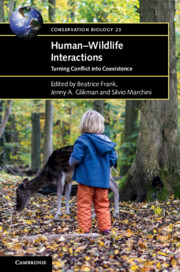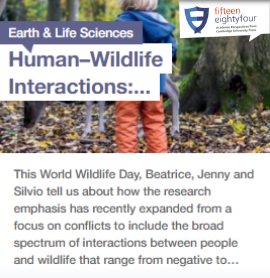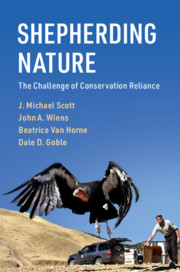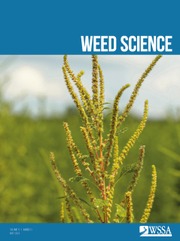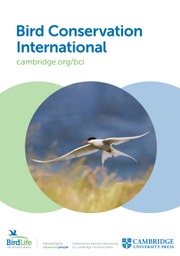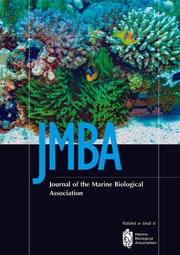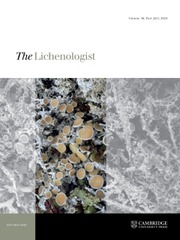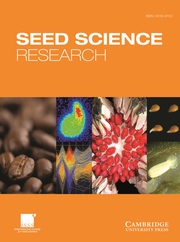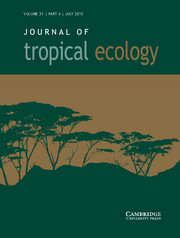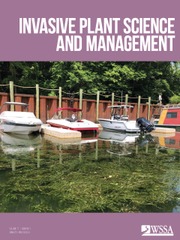Human–Wildlife Interactions
Turning Conflict into Coexistence
Part of Conservation Biology
- Editors:
- Beatrice Frank, Capital Regional District of Victoria Regional Parks
- Jenny A. Glikman, Institute for Conservation Research, San Diego Zoo Global
- Silvio Marchini, Universidade de São Paulo
- Date Published: April 2019
- availability: This ISBN is for an eBook version which is distributed on our behalf by a third party.
- format: Adobe eBook Reader
- isbn: 9781108246033
Find out more about Cambridge eBooks
Adobe eBook Reader
Other available formats:
Hardback, Paperback
Looking for an examination copy?
This title is not currently available for examination. However, if you are interested in the title for your course we can consider offering an examination copy. To register your interest please contact [email protected] providing details of the course you are teaching.
-
Human-wildlife conflict (HWC) is one of the most complex and urgent issues facing wildlife management and conservation today. Originally focused on the ecology and economics of wildlife damage, the study and mitigation of HWC has gradually expanded its scope to incorporate the human dimensions of the whole spectrum of human-wildlife relationships, from conflict to coexistence. Having the conflict-to-coexistence continuum as its leitmotiv, this book explores a variety of theories and methods currently used to address human-wildlife interactions, illustrated by case studies from around the world. It presents some key concepts in the field, such as values, emotions, social identity and tolerance, and a variety of insights and solutions to turn conflict into coexistence, from individual level to national scales, including conservation marketing, incremental and radical innovation, strategic planning, and socio-ecological systems. This volume will be of interest to a wide range of readers, including academics, researchers, students, practitioners and policy-makers.
Read more- Describes a variety of new perspectives and solutions focusing on coexistence rather than conflict, and intends to catalyse a paradigm shift in wildlife management and conservation from human-wildlife conflict to human-wildlife interactions and coexistence
- Presents a newly developed concept to foster the inclusion of tolerance and coexistence in human-wildlife research: the conflict-to-coexistence continuum
- Case studies illustrate frameworks on coexisting with urban wildlife, explore governance for long distance migration, discuss effectiveness and acceptability of interventions for coexistence, and define the place wildlife holds in different landscapes
Reviews & endorsements
‘This is an open-minded book that seeks to examine the many facets of each case study …’ Amanda Hardy, The Biologist
See more reviews‘It will be of great interest to life and conservation scientists because it offers a humanistic point of view that is fundamental to conservationists, but which is seldomly effectively addressed. It should also interest academics of the human sciences who are addressing other kinds of conflicts, such as political or religious polarizations … An urgent step in search for the balance necessary for human-wildlife coexistence can be found in this book.’ Eduardo Bessa, The Quarterly Review of Biology
Customer reviews
17th Oct 2024 by UName-605823
Though I have not read the book, I am sure after reading the introduction that the book could be an asset for the Researchers, Wildlife Enthusiasts, Wildlife Lovers, Rescuers, and in general, Nature Lovers. I wish a copy of the book for my personal as well as institutional library.
Review was not posted due to profanity
×Product details
- Date Published: April 2019
- format: Adobe eBook Reader
- isbn: 9781108246033
- contains: 48 b/w illus.
- availability: This ISBN is for an eBook version which is distributed on our behalf by a third party.
Table of Contents
1. Human-wildlife conflicts and the need to include coexistence Beatrice Frank and Jenny A. Glikman
2. A multilevel, systems view of values can inform a move toward human-wildlife coexistence Alia M. Dietsch, Michael J. Manfredo, Leeann Sullivan, Jeremy T. Bruskotter and Tara L. Teel
3. Broadening the aperture on coexistence with wildlife through the lens of identity, risk, and morals Michelle L. Lute and Meredith L. Gore
4. Understanding emotions as opportunities for and barriers to coexistence with wildlife Maarten Jacobs and Jerry Vaske
5. Tolerance for wildlife: a psychological perspective Kristina Slagle and Jeremy T. Bruskotter
6. A framework for assessing and quantifying human-wildlife interactions in urban areas Carl D. Soulsbury and Piran C. L. White
7. Predators in humans landscapes Ketil Skogen, Sunetro Ghosal, Silje Skuland and Siddhartha Krishnan
8. Corridor of conflict: learning to coexist with long distance mule deer migrations, Wyoming, United States Joshua Morse and Susan G. Clarka
9. Collaborative approach for coexistence with wildlife in rural regions of Japan Ryo Sakurai
10. Toward tolerance and coexistence: a comparative analysis of the human-macaque interface in Sulawesi, Indonesia, and Florida, United States Erin P. Riley
11. Elephants and bees: using beehive fences to increase human-elephant coexistence for small-scale farmers in Kenya Lucy E. King
12. The twin challenges of preventing real and perceived threats to human interests Omar Ohrens, Francisco Santiago-Avila and Adrian Treves
13. Conflict and coexistence with invasive wildlife: examining attitudes and behaviours toward Burmese pythons in Florida Rebecca G. Harvey and Frank J. Mazzotti
14. Institutions for achieving human wildlife coexistence: the case of large herbivores and large carnivores in Europe John D. C. Linnell and Bjørn Kaltenborn
15. Worldviews and coexistence with coyotes Shelley M. Alexander and Dianne L. Draper
16. Conservation marketing as a tool to promote human-wildlife coexistence Diogo Verissimo, Brooke Sadowsky and Leo Douglas
17. Leaping forward: the need for innovation in wildlife conservation Leela Hazzah, Salisha Chandra and Stephanie Dolrenry
18. Toward human-wildlife coexistence through the integration of human and natural systems: the case of grey wolves in the Rocky Mountains, USA Neil Carter, Jeremy T. Bruskotter, John Vucetich, Robert Crabtree, Hannah Jaicks, Gabriel Karns, Michael Paul Nelson, Doug Smith and John D. C. Linnell
19. Planning for coexistence in a complex human-dominated world Silvio Marchini, Katia M. P. M. B. Ferraz, Alexandra Zimmermann, Thaís Guimaraes-Luiz, Ronaldo Morato, Pedro L. P. Correa and David W. Macdonald
20. Human-wildlife interactions: multifaceted approaches for turning conflict into coexistence Jenny A. Glikman, Beatrice Frank and Silvio Marchini.
Sorry, this resource is locked
Please register or sign in to request access. If you are having problems accessing these resources please email [email protected]
Register Sign in» Proceed
You are now leaving the Cambridge University Press website. Your eBook purchase and download will be completed by our partner www.ebooks.com. Please see the permission section of the www.ebooks.com catalogue page for details of the print & copy limits on our eBooks.
Continue ×Are you sure you want to delete your account?
This cannot be undone.
Thank you for your feedback which will help us improve our service.
If you requested a response, we will make sure to get back to you shortly.
×
